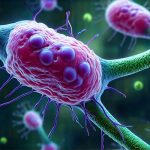The intricate relationship between our gut microbiome – the vast community of microorganisms residing in our digestive tract – and systemic inflammation is rapidly becoming one of the most exciting areas of modern health research. For decades, we’ve largely viewed joint pain and mobility issues as stemming from localized problems: injury, overuse, or simply the wear-and-tear of aging. However, emerging evidence suggests that the health of our gut plays a profoundly significant role in modulating these conditions, often acting as a hidden driver behind chronic discomfort and limited movement. Understanding this connection isn’t about finding a “cure” overnight; it’s about recognizing an additional layer to holistic wellness and empowering individuals with knowledge to support their overall health from the inside out.
This is particularly relevant because of the sheer complexity of the gut microbiome itself. It’s not just about having bacteria, but about the diversity, balance, and function of those bacterial communities. A disrupted gut – often referred to as dysbiosis – can lead to increased intestinal permeability (sometimes called “leaky gut”), allowing substances to enter the bloodstream that would normally remain contained within the digestive system. This triggers an immune response, potentially leading to widespread inflammation and impacting tissues far beyond the gut itself—including joints. The implications for managing joint health are substantial, highlighting a need to shift our focus beyond purely symptomatic treatments. Individuals experiencing weight loss alongside gut issues should seek guidance.
The Gut-Joint Axis: A Two-Way Street
The connection between the gut microbiome and joint health isn’t a one-way street; it’s a complex bidirectional relationship often termed the “gut-joint axis.” This means that not only can gut dysbiosis influence joint inflammation and pain, but joint inflammation itself can also impact the gut microbiome. For instance, chronic pain can lead to reduced physical activity, altered dietary habits (often leaning towards more processed foods), and increased stress levels – all of which negatively affect gut health. This creates a vicious cycle where compromised gut function exacerbates joint issues, and joint problems further deteriorate gut health.
The mechanism at play involves several key pathways. As mentioned previously, increased intestinal permeability allows bacterial components like lipopolysaccharide (LPS) to enter the bloodstream. LPS is a potent trigger for the immune system, activating inflammatory pathways and contributing to systemic inflammation. Additionally, an imbalanced gut microbiome can lead to altered production of short-chain fatty acids (SCFAs), which are crucial metabolites produced by beneficial bacteria during fiber fermentation. SCFAs like butyrate have anti-inflammatory properties and support gut barrier integrity, so a reduction in their production contributes to increased inflammation and permeability. Gut inflammation can significantly impact overall health.
Furthermore, the gut is intimately connected to the immune system – roughly 70-80% of our immune cells reside in the gut. The microbiome plays a critical role in “training” the immune system to differentiate between friend (beneficial bacteria) and foe (pathogens). Dysbiosis can disrupt this training process, leading to an overactive or misdirected immune response that attacks healthy tissues, including those within joints. This is particularly relevant in autoimmune conditions like rheumatoid arthritis, where the immune system mistakenly targets joint linings. Ultimately, a healthy gut microbiome supports a balanced immune system and reduces systemic inflammation—both critical for maintaining joint health. Understanding menstrual cycles and their impact on digestion can also be beneficial.
How Inflammation Impacts Joint Mobility & Pain
Inflammation isn’t inherently bad; it’s a necessary part of the body’s healing process. However, chronic inflammation is where problems arise. When inflammation persists over long periods, it can damage cartilage, erode bone, and lead to pain, stiffness, and reduced range of motion in the joints. This chronic inflammatory state is often fueled by factors like diet, stress, genetics, and—as we’ve discussed—gut dysbiosis.
The specific mechanisms through which inflammation impacts joint mobility include: – Increased production of pro-inflammatory cytokines (like TNF-alpha and IL-6) that directly damage cartilage and bone. – Activation of pain receptors in the joints, leading to chronic discomfort. – Thickening of synovial fluid, reducing its lubricating properties and limiting movement. – Muscle spasms around the joint, further restricting range of motion.
Importantly, pain isn’t just a physical sensation; it’s also influenced by psychological factors. Chronic pain can lead to anxiety, depression, and sleep disturbances, which in turn exacerbate inflammation and create a feedback loop. Addressing gut health is therefore not solely about reducing physical inflammation, but also about supporting overall well-being and breaking this cycle of chronic discomfort. Pain after eating should always be investigated by a medical professional.
The Role of Dietary Fiber & Prebiotics
Dietary fiber isn’t just about regularity; it’s the primary food source for our beneficial gut bacteria. When we consume enough fiber, these bacteria ferment it into SCFAs—those anti-inflammatory powerhouses discussed earlier. Different types of fiber support different bacterial communities, highlighting the importance of dietary diversity. Sources like fruits, vegetables, whole grains, legumes and nuts should all be incorporated into a balanced diet.
Prebiotics are non-digestible fibers that specifically feed beneficial bacteria in the gut. They act as a catalyst for growth and activity, helping to restore balance within the microbiome. Common prebiotic foods include: – Garlic – Onions – Leeks – Asparagus – Bananas (slightly green) – Oats
Supplementing with prebiotics can also be beneficial, but it’s crucial to introduce them gradually to avoid digestive upset like bloating or gas. Start with a small dose and increase slowly as tolerated. A fiber-rich diet coupled with strategic prebiotic supplementation can significantly improve gut microbiome diversity and function, ultimately supporting joint health. Consider how meal texture impacts digestion.
Probiotics: A Nuanced Approach
Probiotics are live microorganisms that, when consumed in adequate amounts, confer a health benefit on the host. They’re often touted as a quick fix for gut problems, but the reality is far more nuanced. While probiotics can be helpful in certain situations, they’re not a one-size-fits-all solution. The effectiveness of a probiotic depends on several factors, including: – The specific strain(s) used – The individual’s existing microbiome composition – The dosage and duration of supplementation
Choosing the right probiotic is crucial. Different strains have different effects, and what works for one person may not work for another. For example, some strains are better at reducing inflammation, while others are more effective at improving gut barrier integrity. It’s essential to consult with a healthcare professional or registered dietitian who can help you select a probiotic that’s appropriate for your individual needs and health goals. Furthermore, remember that probiotics are most effective when combined with a fiber-rich diet—they need something to feed on! Probiotics aren’t meant to replace a healthy diet; they’re intended to complement it. Learning mindfulness while eating can also aid digestion.
It is important to note: This article provides general information about the gut microbiome and its potential impact on joint health. It is not intended to be a substitute for professional medical advice, diagnosis, or treatment. Always consult with a qualified healthcare provider before making any changes to your diet or lifestyle, or starting any new supplements. Finally, gut acidity plays an important role in digestive health.


















